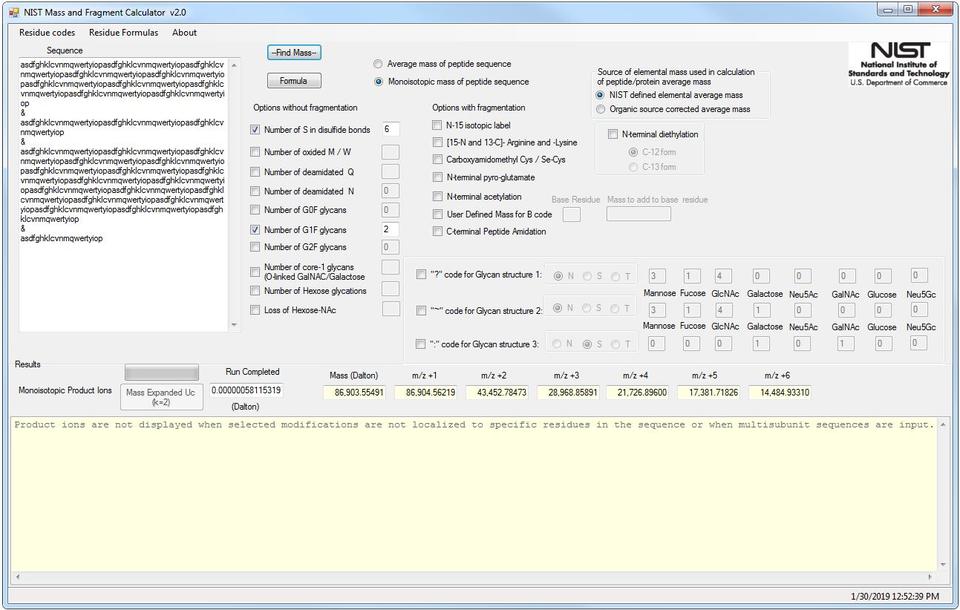NIST Mass and Fragment Calculator Software
The NIST Mass and Fragment Calculator is a program written in Visual Basic which calculates the mass of an input peptide or protein sequence along with m/z ions corresponding to 1+, 2+, and 3+ charge states when selecting average mass results. The option exists to select monoisotopic results which will also generate y, b, c, and z product ions. Two forms of the z product ions are displayed. z-CID is the structure from Johnson et al. (Anal. Chem. 59(21) 2621-2625 (1987)) which is relevant to higher-energy fragmentation associated with CID. z-ETD is the fragmentation associated with ETD or ECD as shown in Syka et al. (PNAS 26 9528-9533 (2004).)
Sequence Masses are calculated based on the accumulated occurrences of all the elements within each residue contained in the input sequence according to the residue formula displayed in the Residue Formula menu option. The sequence mass is the sum of the product of the accumulated totals (plus water) by the elemental masses obtained from the following link:
https://www.nist.gov/pml/atomic-weights-and-isotopic-compositions-relative-atomic-masses.
Calculations may be performed on multi-subunit proteins by separating sequences with an ampersand (&). The total mass of the sub-unit will be displayed including selected additions such as pyroglutamation, glycosylation and disulfide bonds.
The Residue Codes menu option lists the valid single-letter codes for the residues including some modified residues. A useful feature is the ability to add a desired mass to a specific residue enabling the identification of fragment peak profiles which match experimental data.
Version 2.0 includes the ability to obtain the expanded uncertainty (k=2) of the calculated result based on Monte Carlo simulation (100,000 trials) along with more modification options.

Contact
-
(301) 975-4457

